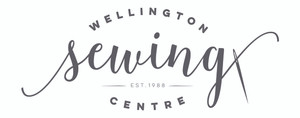Meet our new team member and her love of historical costuming
Posted by Jess Robbie on 28th Aug 2021
Hi I’m Jess, and I joined the team at Wellington Sewing Centre in mid-July 2021 having graduated from the costume construction course at Toi Whakaari (NZ Drama School) last year. Meantime I've been doing some freelance work, most notably for the ‘Feathermania: Fashion to Die For’ exhibit currently on display at Te Papa.
The Te Papa exhibit
The exhibit features fashionable accessories made from feathers and bird skins dating from the 1830s to the 1910s. I made three calico dresses to help display a selection of collars and muffs in the context in which they would have been worn. That's me in the photo, taken by Maarten Holl of Te Papa, with the mannequins wearing the dresses and accessories. Historical costuming, particularly the Victorian era, is really my jam, so I was super excited to work on this project!
The majority of media and popular discussion of costuming in this era tends to focus on the UK, France, and the United States. To me, it's thrilling to find works focusing on New Zealanders because they have a closer and more personal feel. Although some of the accessories featured in the exhibition were imported from overseas to be worn by New Zealand women, many would have been made locally by milliners and taxidermists such as Elizabeth and Hector Liardet of Willis Street, Wellington. How cool is that?
Use of native and introduced birds
Feather and bird-skin accessories were once ubiquitous in Western fashion, particularly toward the end of the 19th century, although understandably they tend to be under-represented in the historical costuming hobby. It's the sad truth that many native birds were driven to extinction or a critically endangered state, despite growing awareness and campaigns formed by Societies dedicated to their protection.
However, I was intrigued to learn that along with the feathers of kiwi and their fellows, other accessories were made with the feathers of birds introduced to the country and today considered pests, such as the two 1830s pelerines (capes) in the photograph. The one to the left of me is made of pheasant feathers, trimmed with peacock, while the other (far right) contains mallard, peacock, and guinea fowl feathers. Other items in the exhibition are trimmed with swan or ostrich feathers.
My next project?
I think it would be great fun to recreate one of the exhibit's pelerines: I could learn a new craft, showcase a slightly unusual side of costuming, and support a local business such as Feathergirl, who focuses on sustainability and pest management! Win win for everyone - except the pheasants and peacocks minding their own business and unaware they are considered pests!
A new love!
All that said, and although I have done some planning, and have patterns and plenty of detailed photographs to make a feathery accessory of my own, I haven’t yet made the leap to ordering feathers. This is because working at Wellington Sewing Centre has surrounded me with wool of all sorts of exciting colours and textures and their call is just too compelling. Over the last few weeks I've been practising different knitting stitches and Gemma, my fabulous colleague, has promised to teach me how to knit socks. And did you know there is a pattern for a 1897 cycling sweater on Ravelry, translated from the original instructions? Featherwork might need to wait just a little longer.
,

